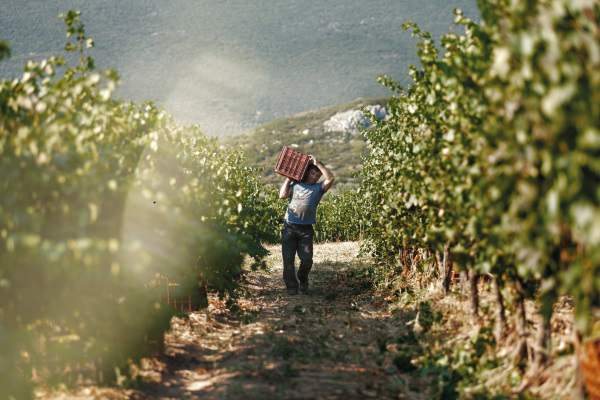Greek wine has been experiencing a renaissance since the 1980s, with the emergence of a new wave of winemakers. Global interest in Greek wines is continuing to grow, due to its many intriguing grape varieties and the production of wines with real local character from a variety of traditional and modern techniques. The region produces diverse wines, ranging from Xinomavro and Agiorgitiko to Krasato, Stavroto, Limniona, Vradiano, Cabernet Sauvignon, Merlot, and Syrah.
The region of Central Greece is on the Eastern side of the Pindus and Agrafa mountains, which divide mainland Greece all the way down to Athens. This area is more arid than Northern Greece, with a climate somewhat similar to Napa Valley or parts of Sonoma near Mount Olympus (an area for reds). It is also much hotter and drier in the South near Athens, which is where you’ll find a great deal of Savatiano (Greece’s most planted white grape). The region boasts nine distinct Protected Geographical Indication (PGI) wine zones; PGI Atalanti Valley, PGI Slopes of Knimida, PGI Opountia Locris, PGI Phthiotis, PGI Parnassos, PGI Thiva, PGI Lilantio Pedio, PGI Evia and PGI Ritsona.
The hotter and more arid climates of the south grow more white wine, including Savatiano (. The historical white grape variety of Savatiano (PGI Evia, PGI Thiva, PGI Atalanti Valley), is among the Greek vineyard’s most widely planted varieties. Whether on its own, as part of blends, or as part of many PGI wines, the variety is responsible for a considerable volume of the dry whites produced. When made well, Savatiano offers flavours of sweet honeydew, green apple, and lime with tingling acidity, akin to Chablis. When oak-aged, Savatiano delivers more lemon curd, wax, and cultured cream with lemon bread notes and a creamy mid-palate structure and finish similar to Burgundy. Savatiano is a surprising discovery from a grape that has long been considered the doldrums of Greek wine.
Another variety, Xinomavro (PGI Opountia Locris) surprises with its performance and multi-faceted personality, yielding “vin de garde” reds, dynamic rosés, aromatic sparkling wines, and even idiosyncratic sweet wines. The essence of the Xinomavro character can be found in the complex, distinct aromas of red fruits, flowers, tomatoes, olives, dried prunes, tobacco and nuts, while wood-aging becomes evident in the subtle hints of spices.
The red wines from the South made of Xinomavro and international grapes tend to offer more stewed fruit. The regional Vradiano evokes tasty ripe strawberry, black pepper, and hibiscus notes contrasting with mouth-drying, choppy tannins.
Central Greece presents many different options for wine lovers, with a range of red, white and rose wines ideal for everything from easy sipping to fuller flavoured tipples.
Read this article also here.

